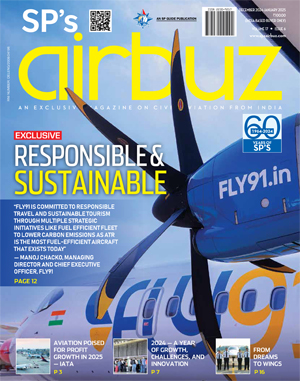Mixed Performance of Modi Government
Even though the Ministry of Civil Aviation has shown lot more proactiveness in one year, one still gets the feeling that it is difficult to cut through the bureaucratic babudom

When Narendra Damodardas Modi took charge as the 14th Prime Minister of the country last year, around this time, a billion hopes soared. After almost a decade of below par performance of the Manmohan Singh Government, the expectation levels rose dramatically among all sections of the society – industry, agriculture, services, people at large, etc, with Modi at the helm. Exactly a year has gone by, while hopes remain, there is a sense of déjà vu, at least in the civil aviation sector that nothing substantive is going to happen, at least for now.
Even though the Ministry of Civil Aviation has shown lot more proactiveness in this period, one still gets the feeling that it is difficult to cut through the bureaucratic babudom. The ministry and entities under it such as the Directorate General of Civil Aviation (DGCA), Airports Authority of India (AAI) have not really lived up to the rhetoric of the new dispensation.
At the policy making level, one expected the government to push through reforms in civil aviation at a scorching pace as to catapult the sector to the next level of growth. That has not happened for sure, though there is a Draft Civil Aviation Policy which needs to be positively tinkered with. Another aspect which needs urgent attention is the 5/20 rule (airline needs to have clocked five years and have 20 aircraft to go international). The Civil Aviation Minister, P. Ashok Gajapathi Raju himself had termed it as an ‘outdated’ policy and that it was time for it to go. We have not got any update on that since the minister’s remarks at the Gujarat Aviation conclave in April this year. There is talk of domestic flying credits system to replace the rule. Prima facie, the draft looks alright, even though some of the established airlines are not so keen on it as they see competition emerging from new airlines which may benefit from this draft proposal.
It is really high time the government took a positive decision on this as we are already a laughing matter as some of the Middle Eastern airlines such as Emirates, Air Arabia, Etihad and Qatar offer lot more international connections to passengers flying in and out of India. Indian carriers are lagging way behind, though Air India has now started providing more international connections, thanks to its belated entry into Star Alliance network. There is also talk of divesting the debt-ridden national carrier – Air India, which, if it happens, will be good for Indian aviation which has enormous potential in terms of passenger and cargo numbers. The projections are that India will become the third largest aviation market by 2020. India’s scheduled airlines carried 67.73 million passengers in 2014 compared with 61.42 million in 2013 and 58.81 million in 2012. The airlines are projected to record a collective operating profit of Rs. 8,100 crore in fiscal 2016.
Similarly, the potential of the general aviation sector which includes business aviation is huge, considering that the government is opening up Tier-II and Tier-III towns for enhanced economic activity. Infrastructure which is key needs to be given utmost attention and it is hoped that Prime Minister Modi, who benefited immensely using general aviation during his election campaign, will give the necessary push.
On a positive note, the remote and regional connectivity policy is likely to add momentum to the economic transformation of towns and cities. The Airports Authority of India has embarked upon modernisation of airports, activating non-metro airports, most welcome decisions as general aviation is looking with keen interest how the government is going to roll out the red carpet to them.
One of the government’s major breakthrough has been getting the Indian aviation sector to Category-I by the United States’ Federal Aviation Administration, after the latter had downgraded the sector to Category-II. While that is at a perception level, there are many niggling issues that the government needs to resolve post haste. The government should get its act right in its second year, without talking about legacy issues, and ensure the civil aviation sector realises its potential to grow at 18-20 per cent continuously for the next four years. It is an opportune moment to set the course right.





